Union Public Service Commission (UPSC) Delhi conducts National Defence Academy (NDA) entrance exam twice every year for the Indian Armed Forces aspirants. Candidates who have cleared their intermediate exam or appearing in intermediate can apply for the exams. NDA is one of the best career opportunities for the candidates who have just cleared or about to clear their school life, it offers a lifetime of well-paid job security to the candidates with very nice other facilities like accommodation, medical insurance, pension plan etc.
What are the eligibility criteria for NDA exam?
As per the guidelines issued by UPSC, below given are the required eligibility criteria for NDA exam:
Age: Aspirant age should be between 17 and 19(1/2) years.
Qualification: 12th Class of 10+2 System of Education/Equivalent for Army and with Physics and Maths for AF & Navy.
Marital Status: Unmarried
Likely SSB Date: Sep to Oct and Jan to Apr
Date Commencement of Training: Jan and Jul
Training Academy: NDA, Khadakwasla, Pune
Duration of Training: 3 Yrs at NDA and 1 Yr at IMA(For Army cadets)/ 3 Yrs at NDA and 1 Yr at Naval Academy(For Naval cadets)/ 3 Yrs at NDA and 1 & 1/2 Yrs at AFA Hyderabad (For AF cadets).
How to apply for NDA Exam
Candidates are required to apply online by using the website www.upsconline.nic.in.
There are two parts in filling NDA Exam application form, in part 1 registration basic information like – name, gender, parents name, address, marital status and nationality followed by the candidate’s preference in field of armed forces such as Indian Army, Indian Air Force and Indian Navy.
In part 2 registration – candidate have to upload his passport size image and handwritten signature image online followed by preference of test centers.
General Instructions for Online Application of NDA Exam:
- The candidates are required to pay a fee of Rs 100 /- (Rupees one hundred Only) [except SC/ST candidates and those specified in Note-2 of Para 4 of the UPSC NDA notification who are exempted from payment of fee] either by depositing the money in any branch of SBI by cash or by using net banking facility of State Bank of India/State Bank of Bikaner & Jaipur/State Bank of Hyderabad/State Bank of Mysore/State Bank of Patiala/State Bank of Travancore or by using any Visa/Master Credit/Debit Card.
- Before start filling up on Online Application, a candidate must have his photograph and signature duly scanned in the .jpq format in such a manner that each file should not exceed 40 KB and must not be less than 3 KB in size for the photograph and 1 KB for the signature.
- Applicants should avoid submitting multiple applications. However, if due to any unavoidable circumstances any applicant submits multiple applications then he must ensure that the applications with higher RID is complete in all respects.
- In case of multiple applications, the applications with higher RID shall be entertained by the Commission and fee paid against one RID shall not be adjusted against any other RID.
- The applicants must ensure that while filling their Application Form, they are providing their valid and active E-mail IDs as the Commission may use electronic mode of communication while contacting them at different stages of examination process.
- The applicants are advised to check their emails at regular intervals and ensure that the email address ending with @nic.in is directed to their inbox folder and not to the SPAM folder or any other folder.
- Candidates are strongly advised to apply online well in time without waiting for the last date for submission of online application.
What is NDA Exam syllabus
NDA exam consist of two papers – Mathematics (300 marks) and General Ability (600 marks)
NDA Paper 1 Mathematics syllabus:
- Algebra
Concept of a set, operations on sets, Venn diagrams, De Morgan laws, Cartesian product, relation, equivalence relation, Representation of real numbers on a line, Complex numbers – basic properties, modulus, argument, cube roots of unity, Binary system of numbers, Conversion of a number in decimal system to binary system and vice-versa, Arithmetic, Geometric and Harmonic progressions. Quadratic equations with real coefficients, Solution of linear inequations of two variables by graphs, Permutation and Combination, Binomial theorem and its applications, Logarithms and their applications.
- Matrices and Determinants
Types of matrices, Operations on matrices, Determinant of a matrix, basic properties of determinants. Adjoint and inverse of a square matrix, Applications – Solution of a system of linear equations in two or three unknowns by Cramer’s rule and by Matrix Method.
- Trigonometry
Angles and their measures in degrees and in radians. Trigonometrical ratios. Trigonometric identities Sum and difference formulae. Multiple and Sub-multiple angles. Inverse trigonometric functions. Applications – Height and distance, properties of triangles.
- Analytical Geometry – 2D and 3D
Rectangular Cartesian Coordinate system. Distance formula. Equation of a line in various forms. Angle between two lines. Distance of a point from a line. Equation of a circle in standard and in general form. Standard forms of parabola, ellipse and hyperbola. Eccentricity and axis of a conic. Point in a three dimensional space, distance between two points. Direction Cosines and direction ratios. Equation of a plane and a line in various forms. Angle between two lines and angle between two planes. Equation of a sphere.
- Differential Calculus
Concept of a real valued function – domain, range and graph of a function. Composite functions, one to one, onto and inverse functions. Notion of limit, Standard limits -examples. Continuity of functions -examples, algebraic operations on continuous functions. Derivative of function at a point, geometrical and physical interpretation of a derivative – applications. Derivatives of sum, product and quotient of functions, derivative of a function with respect to another function, derivative of a composite function. Second order derivatives. Increasing and decreasing functions. Application of derivatives in problems of maxima and minima.
- Integral calculus and Differential equations
Integration as inverse of differentiation, integration by substitution and by parts, standard integrals involving algebraic expressions, trigonometric, exponential and hyperbolic functions. Evaluation of definite integrals – determination of areas of plane regions bounded by curves -applications. Definition of order and degree of a differential equation, formation of a differential equation by examples. General and particular solution of a differential equations, solution of first order and first degree differential equations of various types – examples. Application in problems of growth and decay
- Vector algebra
Vectors in two and three dimensions, magnitude and direction of a vector. Unit and null vectors, addition of vectors, scalar multiplication of a vector, scalar product or dot product of two vectors. Vector product or cross product of two vectors. Applications-work done by a force and moment of a force and in geometrical problems.
- Statistics and Probability
Statistics: Classification of data, Frequency distribution, cumulative frequency distribution – examples. Graphical representation – Histogram, Pie Chart, frequency polygon – examples. Measures of Central tendency – Mean, median and mode. Variance and standard deviation -determination and comparison. Correlation and regression.
Probability: Random experiment, outcomes and associated sample space, events, mutually exclusive and exhaustive events, impossible and certain events. Union and Intersection of events. Complementary, elementary and composite events. Definition of probability – classical and statistical -examples. Elementary theorems on probability – simple problems. Conditional probability, Bayes’ theorem – simple problems. Random variable as function on a sample space. Binomial distribution, examples of random experiments giving rise to Binominal distribution.
NDA Paper 1 General Ability:
Part ‘A’ – ENGLISH (Maximum Marks 200)
The question paper in English will be designed to test the candidate’s understanding of English and workman like use of words. The syllabus covers various aspects like: Grammar and usage, vocabulary, comprehension and cohesion in extended text to test the candidate’s proficiency in English.
Part ‘B’ – GENERAL KNOWLEDGE (Maximum Marks-400)
The question paper on General Knowledge will broadly cover the subjects: Physics, Chemistry, General Science, Social Studies, Geography and Current Events.
Section A (Physics):
- Physical Properties and States of Matter, Mass, Weight, Volume, Density and Specific Gravity, Principle of Archimedes, Pressure Barometer.
- Motion of objects, Velocity and Acceleration, Newton’s Laws of Motion, Force and Momentum, Parallelogram of Forces, Stability and Equilibrium of bodies, Gravitation, elementary ideas of work, Power and Energy.
- Effects of Heat, Measurement of temperature and heat, change of State and Latent Heat, Modes of transference of Heat. Sound waves and their properties, Simple musical instruments.
- Rectilinear propagation of Light, Reflection and refraction. Spherical mirrors and Lenses. Human Eye. Natural and Artificial Magnets, Properties of a Magnet, Earth as a Magnet.
- Static and Current Electricity, conductors and Nonconductors, Ohm’s Law, Simple Electrical Circuits, Heating, Lighting and Magnetic effects of Current, Measurement of Electrical Power, Primary and Secondary Cells, Use of X-Rays.
- General Principles in the working of the – Simple Pendulum, Simple Pulleys, Siphon, Levers, Balloon, Pumps, Hydrometer, Pressure Cooker, Thermos Flask, Gramophone, Telegraphs, Telephone, Periscope, Telescope, Microscope, Mariner’s Compass; Lightning Conductors, Safety Fuses.
Section B (Chemistry)
- Physical and Chemical changes. Elements, Mixtures and Compounds, Symbols, Formulae and simple Chemical Equations, Law of Chemical Combination (excluding problems).
- Properties of Air and Water. Preparation and Properties of Hydrogen, Oxygen, Nitrogen and Carbondioxide, Oxidation and Reduction.
Acids, bases and salts.
Carbon – different forms.
Fertilizers – Natural and Artificial
- Material used in the preparation of substances like soap, Glass, Ink, Paper, Cement, Paints, Safety Matches, and Gun-Powder.
- Elementary ideas about the Structure of Atom, Atomic, Equivalent and Molecular Weights, Valency.
Section C (General Science)
- Difference between the living and nonliving.
- Basis of Life – Cells, Protoplasm’s and Tissues.
- Growth and Reproduction in Plants and Animals.
- Elementary knowledge of Human Body and its important organs.
- Common Epidemics, their causes and prevention.
- Food – Source of Energy for man.
- Constituents of food, Balanced Diet.
- The Solar System – Meteors and Comets, Eclipses.
- Achievements of Eminent Scientists.
Section ‘D’ (History, Freedom Movement etc.)
- A broad survey of Indian History, with emphasis on Culture and Civilization.
- Freedom Movement in India.
- Elementary study of Indian Constitution and Administration.
- Elementary knowledge of Five Year Plans of India.
- Panchayati Raj, Co-operatives and Community Development.
- Bhoodan, Sarvodaya, National Integration and Welfare State, Basic Teachings of Mahatma Gandhi.
- Forces shaping the modern world; Renaissance, Exploration and Discovery; War of American Independence. French Revolution, Industrial Revolution and Russian Revolution. Impact of Science and Technology on Society. Concept of one World, United Nations, Panchsheel, Democracy. Socialism and Communism. Role of India in the present world.
Section E (Geography)
- The Earth, its shape and size. Latitudes and Longitudes, Concept of time. International Date Line. Movements of Earth and their effects.
- Origin of Earth. Rocks and their classification; Weathering – Mechanical and Chemical, Earthquakes and volcanoes.
- Ocean Currents and Tides
- Atmosphere and its composition – Temperature and Atmospheric Pressure, Planetary Winds, cyclones and Anti-cyclones; Humidity; Condensation and Precipitation; Types of Climate. Major Natural regions of the World.
- Regional Geography of India – Climate, Natural vegetation. Mineral and Power resources; location and distribution of agricultural and industrial activities.
- Important Sea ports and main sea, land and air routes of India. Main items of Imports and Exports of India.
Section F (Current Events)
Knowledge of Important events that have happened in India in the recent years. Current important world events. Prominent personalities – both Indian and International including those connected with cultural activities and sports.
How to prepare for NDA exam
- All the technical concepts of NDA syllabus are from candidate’s school syllabus only, so it is advised to brush up on the basic knowledge of the syllabus it will take 1-2 hours of daily practice.
- Stay put with current affair with daily newspaper, group discussion, television social networking etc.
- Solve previous year NDA exam question paper as much as possible.
- Work on time-management since in Mathematics test, time allotted per question to solve is very less.
- There is negative marking, avoid giving wrong responses, only tick the option when you are sure.
- SSBCrack Exams has started an online course to help aspirants in preparation of NDA written exam, click on the link below to see the demo of the course:-
To enroll directly in the course. Click Here

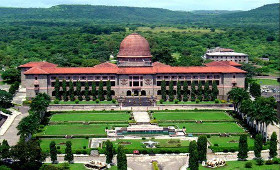

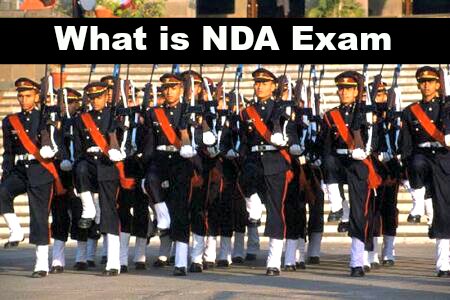
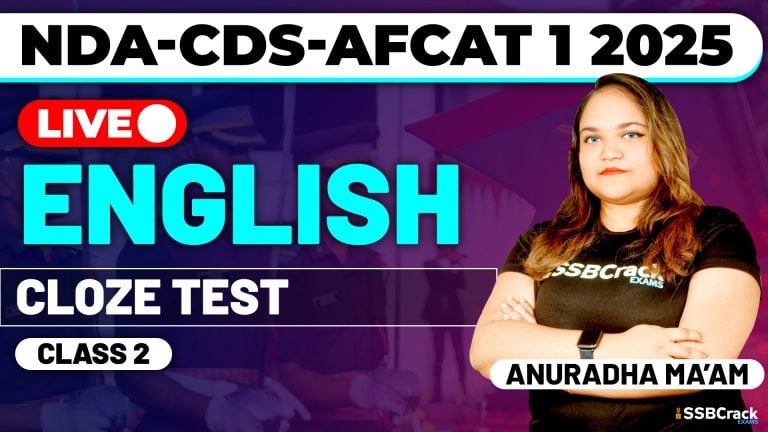
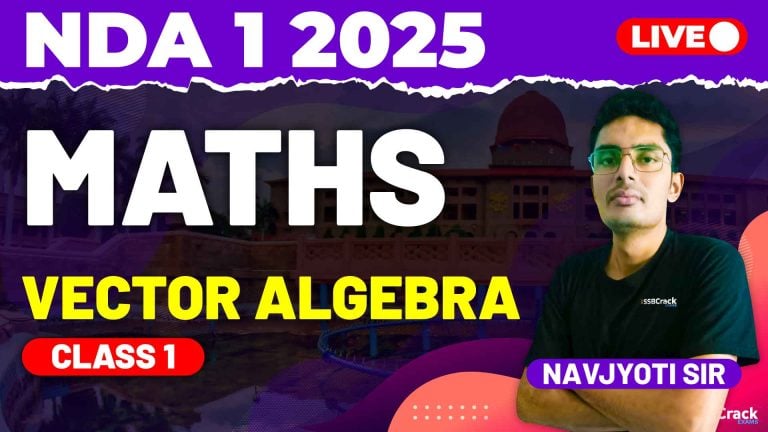
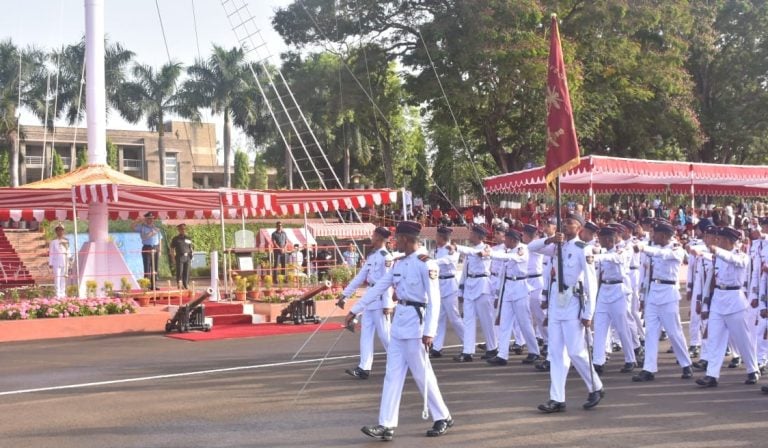
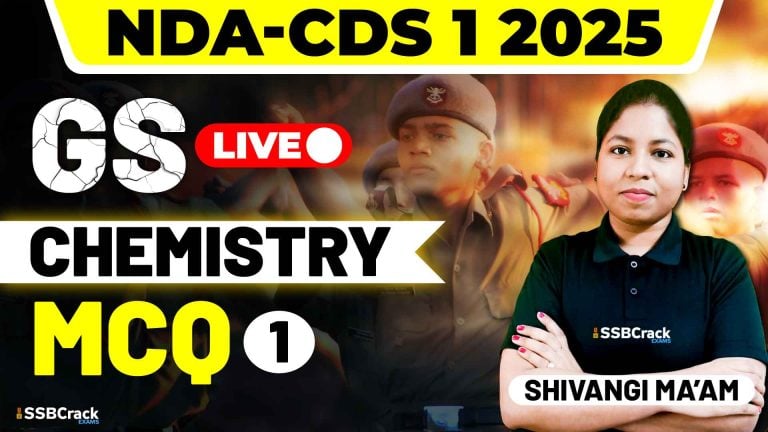



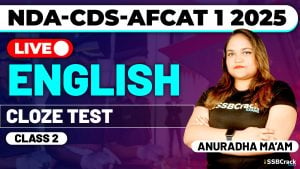
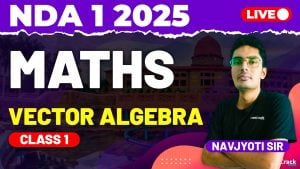
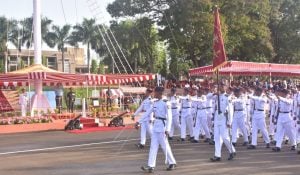
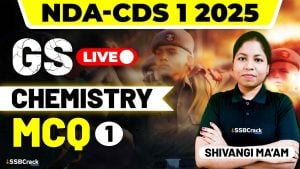





It’s nice website. …get more information on this website. ..
Comment munesh